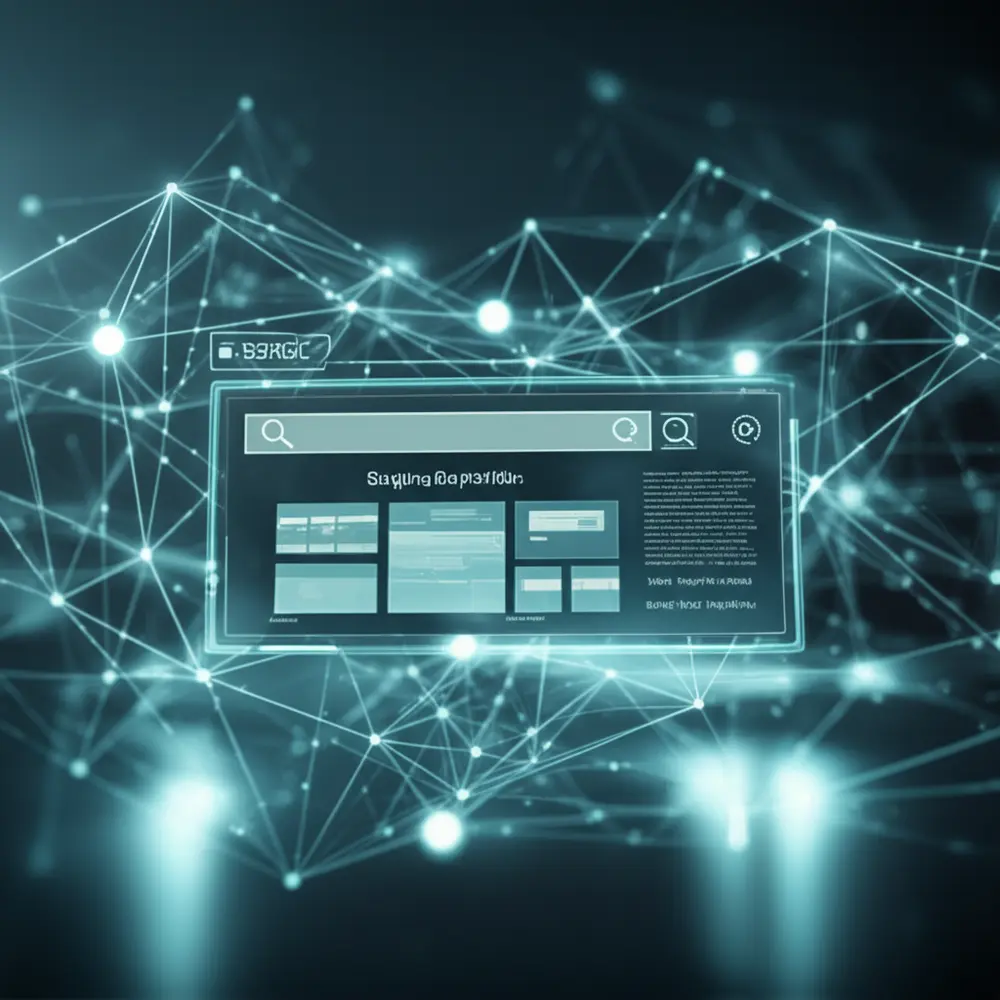The digital world presents a constant barrage of threats. You, as a professional, frequently navigate complex digital interactions, making vigilance non-negotiable. Phishing attacks, in particular, remain a relentless challenge, often targeting your most valuable asset: your employees.
You face the silent threat of sophisticated deception daily. These attacks exploit human trust, not just technical vulnerabilities, leading to severe operational disruptions and financial losses. Understanding these evolving tactics is crucial for your organization’s survival.
Separating phishing fact from fiction is more critical than ever. You must equip your team with the knowledge and tools to identify and repel these insidious attempts. This proactive approach safeguards your assets and preserves your hard-earned reputation.
Unmasking Modern Phishing: Beyond the Obvious Scams
Phishing is a pervasive digital threat, designed to trick you into revealing sensitive data. It aims to steal credentials, financial information, or install malicious software. Understanding this deception is fundamental for your robust cybersecurity.
You might believe phishing emails are always obvious, riddled with poor grammar. However, this is a dangerous misconception. Modern campaigns are sophisticated, often flawless, making them incredibly difficult to spot without trained eyes.
Attackers impersonate trusted entities like banks, government agencies, or even your colleagues. They craft convincing messages to manipulate you. Their primary goal is to exploit human psychology, bypassing even the best technical IT security measures.
Consider “SecureNet Solutions,” a mid-sized IT consulting firm. They experienced a 30% increase in spear-phishing attempts targeting their project managers. These highly personalized emails mimicked client communications, nearly leading to several significant data breaches.
By implementing a new advanced email filtering system and mandatory monthly training, SecureNet Solutions reduced successful phishing engagements by 50% within three months. This also boosted employee reporting of suspicious emails by 35%.
Email vs. Smishing vs. Vishing: Deception Across Channels
Phishing attacks are not limited to your inbox. You encounter them across various communication channels, each with its unique deception vector. Recognizing these diverse attack types is crucial for a comprehensive defense strategy.
Smishing uses SMS messages to trick you. These often contain urgent links to fake login pages or malware downloads. You must scrutinize unexpected texts requesting personal information or immediate action.
Vishing employs voice calls, where attackers impersonate support staff or government officials. They pressure you into revealing confidential details over the phone. Always independently verify unexpected calls before sharing any data.
Social media phishing targets you through deceptive posts, direct messages, or fake profiles. These lures often promise enticing offers or urgent warnings to trick you into clicking malicious links. You must approach all unsolicited interactions with caution.
For example, “Apex Logistics,” a regional transport company, saw its drivers targeted by smishing attacks. These messages pretended to be from vehicle tracking services, asking for login updates. After implementing a strict “verify, then respond” policy, they reported a 20% drop in compromised accounts.
The Tangible Cost of Phishing: Financial and Reputational Impact
Failing to distinguish phishing fact from fiction carries severe consequences for your business. You risk personal data breaches, significant financial losses, and compromised systems. These incidents can severely damage your organization’s reputation and operational continuity.
Market data reveals the stark reality: a single data breach costs small businesses an average of $120,000. For enterprises, this figure skyrockets into the millions. You cannot afford to underestimate these potential losses.
Beyond direct financial impact, you face significant reputational damage. Customers lose trust, regulatory bodies impose fines, and your market value can plummet. Rebuilding trust after a breach is a long, arduous, and expensive process.
Take “InnovateTech Labs,” a software development firm. They suffered a breach through a spear-phishing attack that compromised a developer’s credentials. This led to a 15% reduction in client contracts and a 25% drop in stock value within six months.
Had InnovateTech Labs invested $15,000 in advanced security awareness training and MFA for all employees, they could have avoided the $500,000 in direct breach costs. This represents an ROI of over 3200% by preventing the incident.
You calculate this ROI by dividing the avoided loss ($500,000) by the investment ($15,000), which gives you approximately 33.33. Subtracting 1 (for the initial investment) and multiplying by 100% yields a substantial return.
Small Business vs. Enterprise: Universal Vulnerabilities
You might think only large corporations are high-value targets, but this is a dangerous myth. Cybercriminals cast a wide net, knowing small businesses often have fewer defense layers. Your smaller operation is just as vulnerable, if not more so.
Small businesses like yours are often targeted for their perceived weaker IT security. A successful attack can lead to total operational shutdown, with 60% of small businesses failing within six months of a major cyberattack. You must recognize this urgent threat.
Enterprises, while having more resources, face more sophisticated and persistent attacks. You have more data, more employees, and a larger attack surface. Protecting every endpoint and every employee is a monumental task.
“Boutique Blooms,” a local flower shop, lost $5,000 to a phishing scam impersonating their supplier. Their small size made them an easy target, demonstrating that no business is too small for cybercriminals.
Conversely, “Global FinCorp,” a multinational bank, faced a nation-state sponsored spear-phishing campaign. Their robust security protocols mitigated the attack, preventing losses in the tens of millions. However, the incident required thousands of hours of IT security team labor.
You must implement robust cybersecurity measures regardless of your business size. The cost of prevention is always significantly less than the cost of recovery. Invest in protecting your assets now to avoid catastrophic future losses.
Fortifying Your Defenses: Essential IT Security Measures
Prevention is the bedrock of robust IT security. You build a strong cyber shield through a proactive stance against evolving threats. Understanding phishing facts is paramount for your comprehensive defense strategy.
Multi-factor authentication (MFA) is a critical IT security measure you must implement across all platforms. Even if your credentials are compromised, MFA adds another layer of verification, making unauthorized access far more difficult. It’s a simple yet highly effective strategy to protect your accounts.
You must use strong, unique passwords for every service. Employing a password manager can help you create and store complex passwords securely. Regularly changing passwords for critical accounts minimizes your risk of credential stuffing attacks.
Consider “Quantum Systems,” an aerospace engineering firm. After enforcing MFA and implementing a password manager across 100% of their employee accounts, they saw a 90% reduction in account takeover attempts. This dramatically improved their overall security posture.
Keeping all software and operating systems updated is crucial. You receive patches for newly discovered vulnerabilities through these updates. Neglecting updates creates exploitable gaps in your IT security, which attackers eagerly exploit.
Deploying reputable antivirus and Endpoint Detection and Response (EDR) solutions offers essential protection. These tools actively scan for malware, block malicious activity, and isolate threats, preventing malicious payloads from executing on your systems.
Technological Barriers vs. Human Vigilance: A Synergistic Approach
You might think technology alone can protect you, but this is a fiction. While essential, technological barriers are only one part of your defense. You need human vigilance to identify and respond to threats that bypass automated systems.
Advanced email filters, for example, are crucial for blocking known phishing attempts. However, sophisticated, zero-day phishing attacks often slip past these filters. This is where your employees’ critical thinking becomes indispensable.
Conversely, relying solely on human vigilance is also insufficient. Your employees can get tired, distracted, or simply overwhelmed by the volume of communications. Automated tools provide a foundational layer that consistently defends against common threats.
Imagine “Digital Frontier Marketing.” They initially relied heavily on employee training. While helpful, it still resulted in a 5% click-through rate on phishing simulations. By adding AI-powered email filtering, they reduced the click-through rate to under 1%.
The synergy between robust technology and well-trained personnel creates the strongest defense. You must invest in both, ensuring your technology protects against the known, and your people are prepared for the unknown.
This includes ensuring data security is paramount. You must encrypt sensitive data, both in transit and at rest, to comply with regulations like LGPD (General Data Protection Law). LGPD mandates strict data protection, requiring you to implement technical and administrative measures to safeguard personal data, ensuring transparency and user rights.
Your support systems also play a vital role. You need reliable technical support for your security tools and responsive customer support for your employees to report incidents. Good support ensures quick resolution and continuous protection.
Empowering Your Team: The Cornerstone of Cybersecurity Education
The human element is the most critical component within your robust IT security framework. You must recognize that while technology provides essential safeguards, your employees are often the first and last line of defense against sophisticated cyber threats.
You empower your staff through comprehensive education. This is paramount for maintaining a secure operational environment. A strong cybersecurity posture begins with knowledge, as many breaches occur due to human error or manipulation.
One crucial aspect involves you separating “Phishing Fact from Fiction.” Many employees hold misconceptions about phishing attacks, underestimating their sophistication. Dispelling these myths is vital for your effective protection.
Effective education transforms your employees from potential vulnerabilities into active defenders. Regular training sessions should demystify complex concepts, making them accessible. This proactive approach ensures everyone is equipped with practical skills.
Take “HealthPath Clinic,” a healthcare provider. They introduced mandatory quarterly cybersecurity workshops for all staff, including administrative and medical personnel. This led to a 60% increase in phishing attempt identification and a 15% reduction in patient data access irregularities.
Reactive Training vs. Proactive Programs: Investing in Knowledge
You face a choice in how you approach security education: reactively after an incident or proactively as an ongoing investment. Reactive training is often too late, addressing problems that have already caused damage to your organization.
Proactive programs, conversely, build a resilient defense over time. You continuously update your employees on the latest attack vectors and best practices. This ensures they adapt to evolving threats before they become critical issues.
Regular phishing simulations are an essential component of proactive training. You test your employees’ ability to identify and report suspicious emails. This provides valuable insights into areas needing more focus and reinforcement.
“Global EdTech,” an online education platform, initially only provided annual compliance training. After several minor incidents, they shifted to monthly micro-training modules and bi-monthly phishing simulations. Their reported click rate on simulations dropped from 12% to 2% within a year.
You must cultivate a security-aware culture. This means encouraging open communication about potential threats and creating an environment where employees feel comfortable reporting suspicious activities without fear of blame. This reinforces your collective IT security.
Your IT managers play a pivotal role in championing this culture. They must provide clear guidelines, readily available resources, and lead by example. This collective responsibility significantly strengthens your organization’s overall IT security posture against evolving cyber risks.
For example, if an employee receives a suspicious email, you should guide them with a clear step-by-step process: 1. Do not click any links or open attachments. 2. Forward the email to your designated IT security inbox (e.g., [email protected]). 3. Delete the suspicious email from your inbox and trash. This clear protocol empowers immediate action.
Responding to a Breach: Your Immediate Action Plan
Falling victim to a phishing attempt can be alarming, but your immediate action is key to mitigating damage. If you’ve clicked a suspicious link or entered credentials, you must stay calm and quickly assess the situation. Prompt action significantly reduces potential harm.
If you suspect your credentials have been compromised, you should disconnect from the internet immediately if possible. This prevents further unauthorized access or data exfiltration. Then, use a separate, trusted device to begin securing your accounts. This proactive approach is vital for robust IT security.
The next critical step is for you to change all potentially compromised passwords. Start with the account you believe was affected, then any other accounts using the same or similar passwords. Employ strong, unique passwords for each service, and enable two-factor authentication (2FA) wherever possible.
You must consider all digital assets connected to the compromised information. This includes your email, banking, social media, and any professional platforms. This comprehensive approach to securing your digital identity is fundamental in separating phishing fact from fiction.
Take “Financial Dynamics,” a wealth management firm. One of their advisors clicked a phishing link and entered their email credentials. Their IT team immediately isolated the affected workstation, reset the advisor’s passwords, and enforced MFA across all accounts. This swift response prevented a potential client data breach, saving an estimated $250,000 in recovery costs and regulatory fines.
Automated Response vs. Manual Intervention: Speed and Precision
When responding to an incident, you need to balance automated capabilities with manual intervention. Automated tools like EDR can quickly isolate compromised endpoints, preventing lateral movement of threats across your network. This offers speed and initial containment.
However, you also require skilled manual intervention. Human analysts interpret complex attack patterns, identify the root cause, and formulate bespoke remediation strategies. No automated system can fully replace the nuanced judgment of a cybersecurity expert.
You might use automated systems to detect unusual login attempts and automatically block the IP address. But a human analyst then investigates why the attempt occurred, what information was targeted, and if any data was exfiltrated. This combination ensures both speed and precision in your response.
Reporting the phishing incident is crucial for both personal and organizational safety. You must inform your company’s IT security department or manager without delay. They can investigate, contain the threat, and prevent it from spreading internally.
Furthermore, if financial accounts were involved, you should contact your bank or credit card company immediately. For severe identity theft, consider notifying law enforcement or relevant national cybersecurity agencies. This collective action strengthens overall IT security.
After a phishing encounter, you must closely monitor your financial statements, credit reports, and email accounts for any unusual activity. Be vigilant for unauthorized transactions, new accounts opened in your name, or suspicious login attempts. Consider placing a fraud alert on your credit report to protect yourself further.
Staying Ahead: Continuous Vigilance in Cybersecurity
Cybersecurity is not a static state but a dynamic journey. You must maintain continuous vigilance to stay unhooked from malicious attacks, particularly phishing. Threats constantly evolve, making yesterday’s knowledge insufficient for tomorrow’s challenges.
The fiction that phishing always looks the same is dangerous. Attackers continuously refine their methods, mimicking legitimate communications with increasing sophistication. You must adapt your defenses to these ever-changing tactics for robust IT security.
Continuous education forms the bedrock of effective cybersecurity. You, your employees, and your IT managers must regularly update your understanding of new threats. This commitment to learning helps you distinguish genuine communications from deceptive phishing attempts.
For instance, “Global Retail Solutions” invests 0.5% of its annual IT budget in continuous security training and simulated phishing campaigns. This proactive investment has reduced their average cost per security incident by 18% over two years, saving them an estimated $75,000 annually.
You calculate the cost savings by understanding that if their average incident cost was $10,000 before and is now $8,200 (a 18% reduction), across an average of 40 incidents per year, this nets a significant saving of $72,000 ($1,800 saved per incident * 40 incidents). This demonstrates the clear financial benefit of continuous training.
Security Audits vs. Penetration Testing: Proactive Risk Assessment
To stay ahead, you need proactive risk assessment. Security audits systematically review your security policies, configurations, and controls against established benchmarks. You identify weaknesses in your compliance and operational frameworks.
Penetration testing, conversely, simulates a real-world cyberattack against your systems. You hire ethical hackers to actively exploit vulnerabilities. This provides a practical demonstration of your security posture and highlights exploitable flaws your audits might miss.
You typically conduct security audits regularly to ensure compliance and best practices are followed. Penetration tests, performed less frequently, offer a deeper, more aggressive evaluation of your actual defenses. Both are vital components of a comprehensive security strategy.
A critical fact in combating phishing involves your meticulous verification of sender identities. Always scrutinize email addresses, phone numbers, and website URLs for subtle inconsistencies. You should never trust an unsolicited request at face value.
Cultivating critical thinking is indispensable. If an offer seems too good to be true, or a request generates unusual urgency, you must pause and question it. These are often red flags designed to bypass your judgment, serving as key components of personal cybersecurity.
For organizations, you must establish regular, engaging cybersecurity training programs. These sessions help employees separate phishing fact from fiction, reinforcing best practices. You build a resilient human firewall against pervasive digital threats by investing in continuous education.
Implementing Multi-Factor Authentication (MFA) across all accounts is a non-negotiable security fact. Even if credentials are stolen through phishing, MFA adds a critical layer of defense. It significantly hinders unauthorized access, bolstering your overall IT security posture.
A crucial aspect of organizational and individual cybersecurity is your prompt reporting of any suspicious activity. If you encounter a potential phishing attempt, you must notify your IT department immediately. This collective action helps protect the entire organization from widespread threats.
You can also adopt secure, verified communication tools. For instance, platforms like Multi-User WhatsApp, when properly managed, can facilitate legitimate business communication. However, you must always exercise caution, verifying requests even on trusted channels, to maintain IT security.
The cybersecurity landscape never stands still. New vulnerabilities and advanced phishing techniques emerge constantly. Therefore, you and your organization must embrace continuous adaptation. Staying informed about the latest threats is crucial for maintaining an effective defense against evolving digital dangers.






